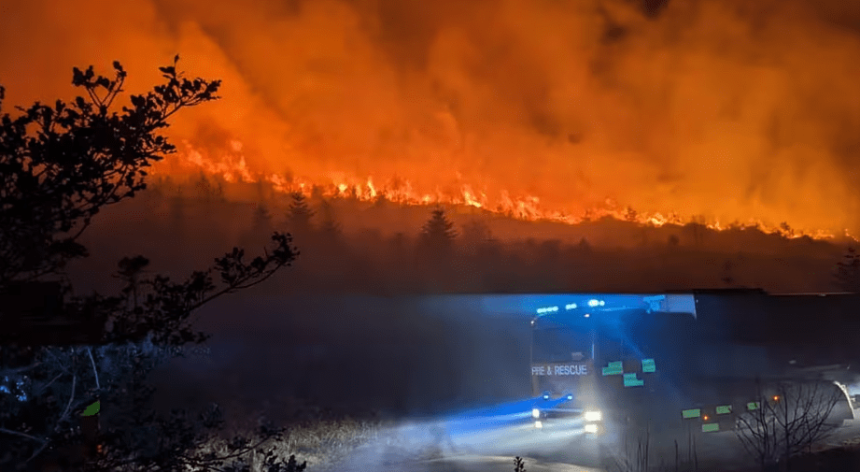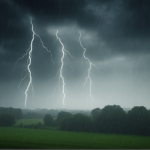Thick smoke from intense Canadian wildfires has travelled across the Atlantic, shrouding parts of Ireland and northwestern Europe in hazy skies, according to environmental scientists.
The Copernicus Atmosphere Monitoring Service (CAMS), operating under the EU’s Earth observation programme, confirmed the smoke plume had originated from ongoing wildfires in Manitoba, Saskatchewan, and Ontario. It was first detected over Ireland on Sunday, June 1, with further spread expected this week.
“These fires are not unusual in boreal forests during spring and summer. But the intensity of fires we’ve seen in Canada this year, particularly in central regions, is extraordinary,” explained Mark Parrington, Senior Scientist at CAMS.
According to CAMS data, while Canadian wildfire smoke is clearly visible — often colouring sunsets and hazing skies — it’s circulating at high altitudes, which significantly reduces its impact on ground-level air quality in Europe.
However, that’s not the case in Canada. Over 25,000 residents have been evacuated, with states of emergency declared in both Manitoba and Saskatchewan. In the U.S., areas near the Canadian border have also reported poor air quality due to the drifting smoke.
Despite being high in the atmosphere, the Canadian wildfire smoke is altering visual conditions across Europe. Skies appear murkier, sunsets more vibrant — a reminder of the fires’ distant ferocity.
“The fact that we can notice the impacts of the smoke in European skies is a reflection of the devastation of wildfires, which have been burning in Canada.
A lot of smoke has to be generated in order for it to travel so far and be noticeable, and it shows how people on either side of the Atlantic are connected via the atmosphere,” Parrington said.
Simultaneously, wildfires are spreading across Russia’s Far East, particularly in Buryatia and Zabaykalsky Krai, near China and Mongolia.
CAMS reports show carbon emissions from these blazes are at their highest levels since 2018 for this time of year. The resulting smoke has even reached northeastern China, Northern Japan, and the Arctic.
These global fire events are sounding the alarm among climate scientists. Both the Canadian wildfire smoke and the emissions from Russia highlight the global reach of wildfires and the worsening climate crisis.
Experts warn this could be a harbinger of a prolonged and severe wildfire season. A mix of ongoing drought and warmer temperatures is heightening risks, not only in Canada, but potentially across northern Europe too.
Although no immediate health risks from Canadian wildfire smoke have been flagged in Europe, environmentalists stress the importance of continuous tracking. The CAMS team will maintain their satellite monitoring as the dry season intensifies.
Key Takeaway
- Canadian wildfires are fuelling transatlantic smoke plumes.
- Over 25,000 Canadians have been evacuated so far.
- Smoke has been detected across Ireland, with more to come.
- Wildfires in Russia are also contributing to global air quality issues.
- CAMS continues to monitor smoke spread and climate implications.
Canadian wildfire smoke has now become a visible signal of how deeply climate disruptions are felt, even thousands of miles from the source. While Europe currently faces limited immediate threats, the skies tell a more connected, cautionary tale.






